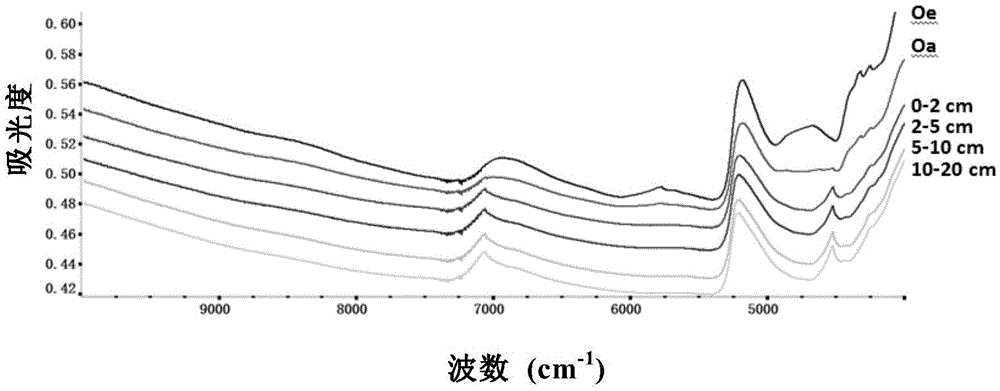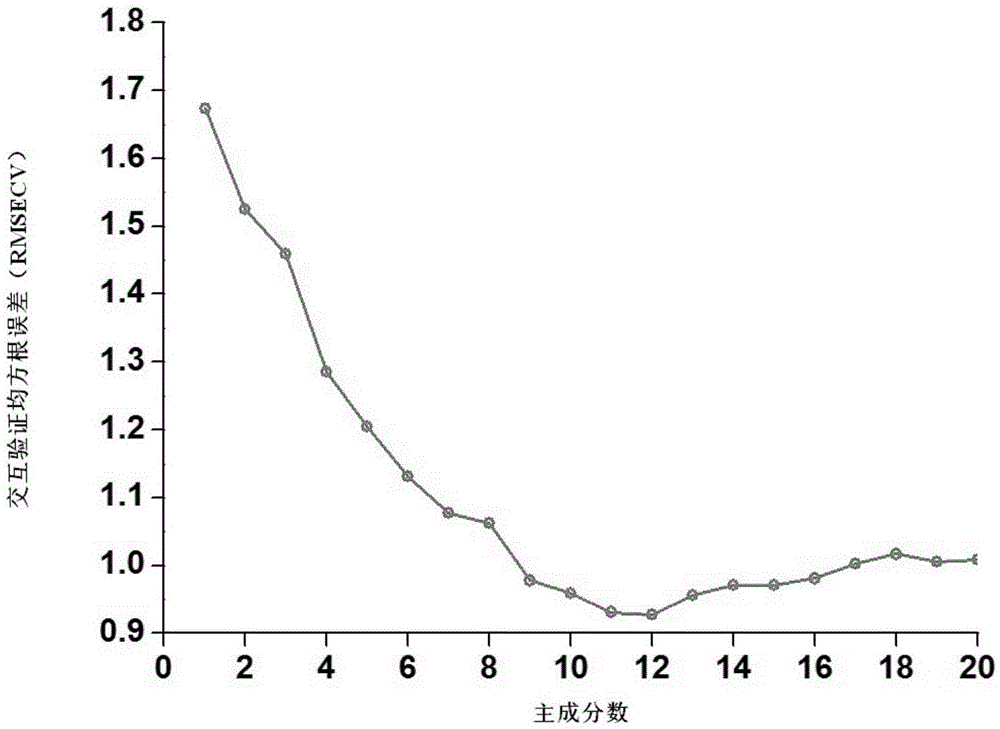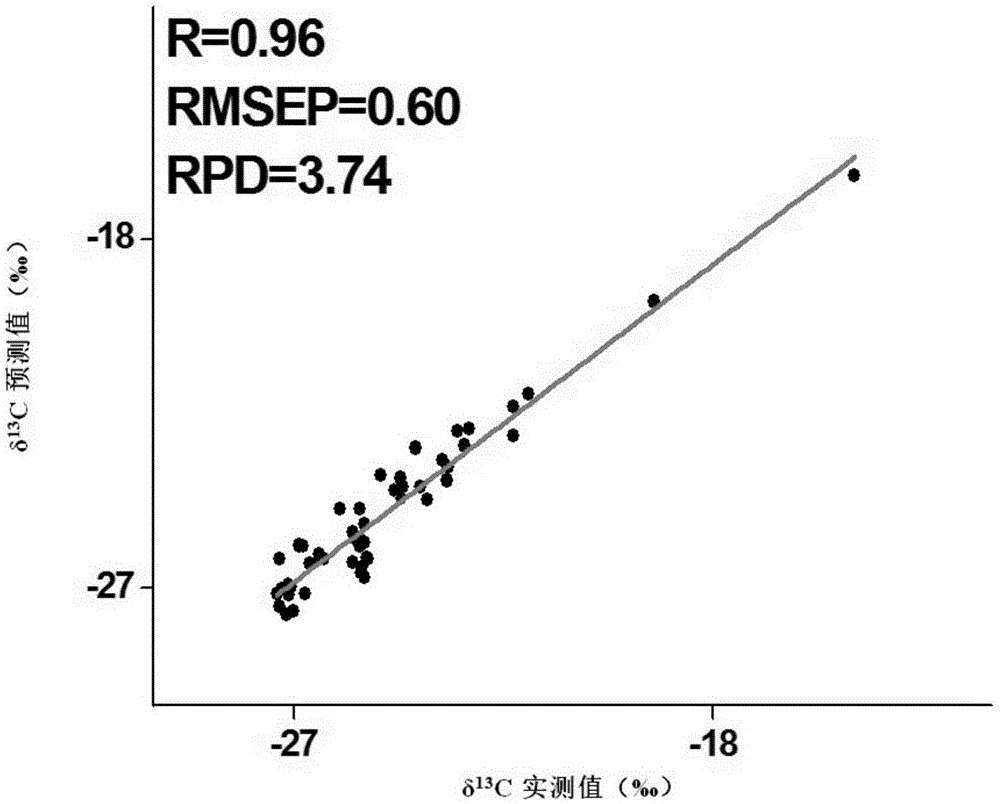Method for detecting stable carbon isotopic ratio of soil through near infrared spectrum
A technology of stable carbon isotope and near-infrared spectroscopy, applied in the field of ecology, can solve the problems of high technical requirements, expensive instruments, and high testing costs, and achieves the effects of strong popularity, easy operation and wide application range.
- Summary
- Abstract
- Description
- Claims
- Application Information
AI Technical Summary
Problems solved by technology
Method used
Image
Examples
Embodiment 1
[0059] Example 1 Soil including Oe and Oa
[0060] (1) Prepare the soil sample to be tested. Remove impurities from the mineral layer soil, air-dry, pulverize, pass through a 60-mesh sieve, and store in a desiccator for later use; bake the Oe and Oa layer soil at 60°C for 48 hours to remove moisture, pulverize, pass through a 60-mesh sieve, and store in a desiccator for future use. A total of 199 samples came from different depths (Oe, Oa, 0-2, 2-5, 5-10, 10-20cm) soil samples, including 139 mineral layer soils and 60 Oe and Oa layer soils.
[0061] From Table 1, the accuracy of the spectral model has not been improved after multivariate scattering correction preprocessing, which proves that the sample is well prepared, and the influence of particle scattering effect on spectral acquisition is minimized as much as possible.
[0062] (2) Using stable isotope ratio mass spectrometry to measure the δ of the soil sample to be tested 13 C value.
[0063] (3) Spectrum collection...
Embodiment 2
[0071] Example 2 Mineral layer soil not including Oe and Oa
[0072] (1) Prepare the soil sample to be tested. Remove impurities from the mineral layer soil, air-dry, pulverize, pass through a 60-mesh sieve, and store in a desiccator for future use. A total of 139 samples came from different depths (0-2, 2-5, 5-10, 0-2, 2-5, 5-10, 10-20cm) of mineral layer soil samples.
[0073] From Table 2, the accuracy of the spectral model has not been improved after multivariate scattering correction preprocessing, which proves that the sample is prepared well, and the influence of particle scattering effect on spectral acquisition is minimized as much as possible.
[0074] (2) Using stable isotope ratio mass spectrometry to measure the δ of the soil sample to be tested 13 C value.
[0075] (3) Spectrum collection. Weigh 200 mg of soil sample, place it in a 11 mm cross-section of circular stainless steel cylinder, the bottom is made of low-hydroxyl quartz glass, and the top of the sa...
PUM
 Login to View More
Login to View More Abstract
Description
Claims
Application Information
 Login to View More
Login to View More - R&D
- Intellectual Property
- Life Sciences
- Materials
- Tech Scout
- Unparalleled Data Quality
- Higher Quality Content
- 60% Fewer Hallucinations
Browse by: Latest US Patents, China's latest patents, Technical Efficacy Thesaurus, Application Domain, Technology Topic, Popular Technical Reports.
© 2025 PatSnap. All rights reserved.Legal|Privacy policy|Modern Slavery Act Transparency Statement|Sitemap|About US| Contact US: help@patsnap.com



